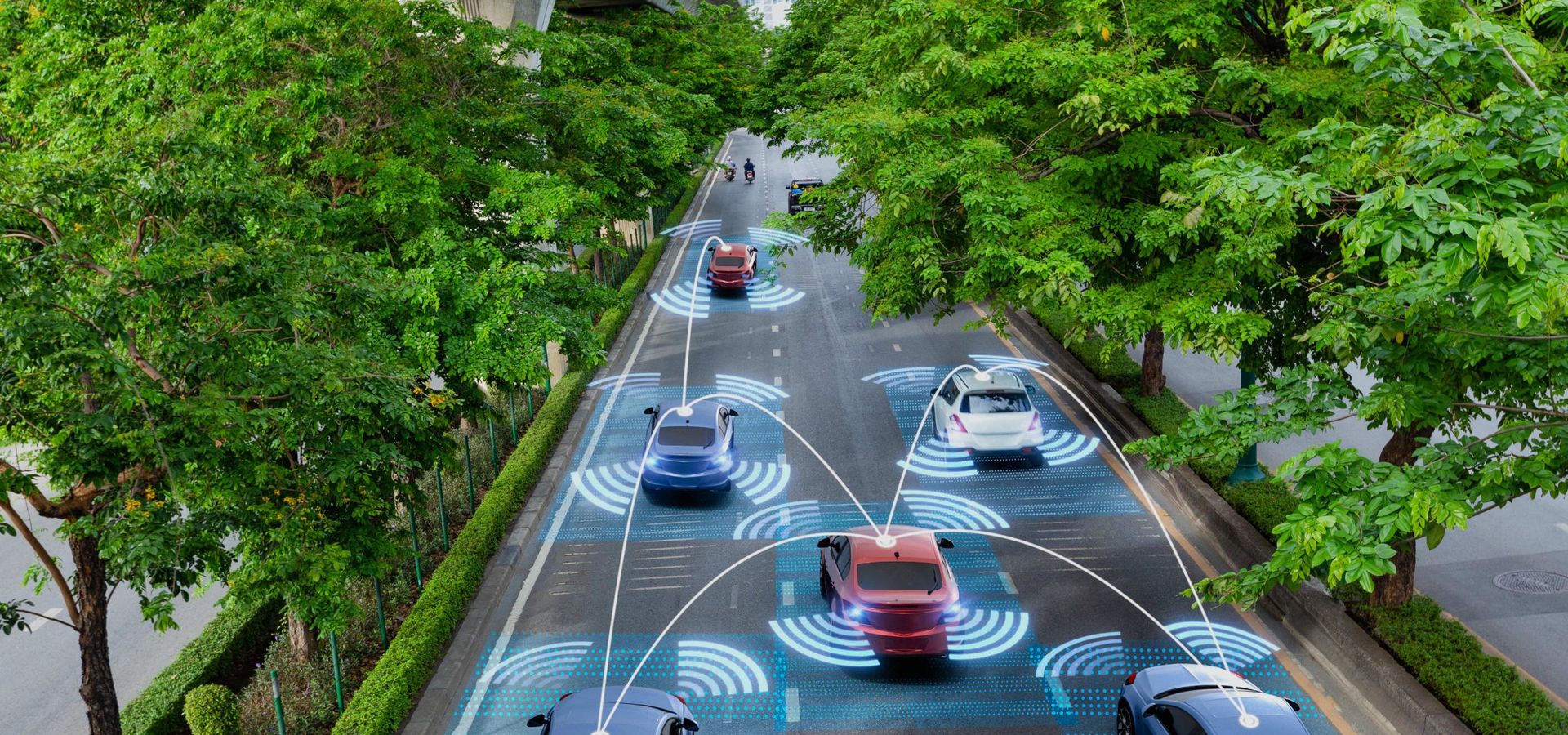The internet of things (IoT) has only recently become ingrained in our everyday life. It surrounds us everywhere we go: connected cars driving on the street, home automation devices located in the house, smart office sensors powering digital workplaces of today, and fitness trackers worn on our bodies. Altogether, they create a massive ecosystem of 26.66 billion interconnected things, according to Statista, which hold a remarkable influence over societies and economies worldwide.
But the world hasn’t always been this way. Until 1999, the term “internet of things” didn’t even exist. So, how exactly did the internet of things evolve so fast and become such a regular buzzword, and what milestones marked internet of things development globally? In order to answer these questions, let’s dive into the roots of this incredible technology.
The brief history of the internet of things
The concept of connected devices itself dates back to 1832 when the first electromagnetic telegraph was designed. The telegraph enabled direct communication between two machines through the transfer of electrical signals. However, the true history of enterprise IoT started with the invention of the internet—a very essential component—in the late 1960s, which then developed rapidly over the next decades.
The 1980s
This might be hard to believe, but the first connected device was a Coca-Cola vending machine situated at the Carnegie Melon University and operated by local programmers. They integrated micro-switches into the machine and used an early form of the internet to see if the cooling device was keeping the drinks cold enough and if there were available Coke cans. This invention fostered further studies in the field and the development of interconnected machines all over the world.
The 1990s
In 1990, John Romkey connected a toaster to the internet for the very first time with a TCP/IP protocol. One year later, University of Cambridge scientists came up with the idea to use the first web camera prototype to monitor the amount of coffee available in their local computer lab’s coffee pot. They programmed the webcam to take pictures of the coffee pot three times per minute, then send the images to local computers, thus allowing everyone to see if there was coffee available.
The year 1999 was easily one of the most significant for the IoT history, as Kevin Ashton coined the term “the internet of things.” A visionary technologist, Ashton was giving a presentation for Procter & Gamble where he described IoT as a technology that connected several devices with the help of RFID tags for supply chain management. He specifically used the word “internet” in the title of his presentation in order to draw the audience’s attention since the internet was just becoming a big deal that time. While his idea of RFID-based device connectivity differs from today’s IP based IoT, Ashton’s breakthrough played an essential role in the internet of things history and technological development overall.
The 2000s
At the beginning of the 21st century, the term “internet of things” came into widespread use by the media, with outlets like The Guardian, Forbes, and the Boston Globe making mention of it. Interest in the IoT technology was steadily increasing, which led to the 1st International Conference on the Internet of Things held in Switzerland in 2008, where participants from 23 countries discussed RFID, short-range wireless communications, and sensor networks.
Moreover, several major developments fostered the IoT evolution. One was a refrigerator connected to the internet that was introduced by LG Electronics in 2000, allowing its users to shop online and make video calls. Another essential development was a small rabbit-shaped robot named Nabaztag created in 2005 that was capable of telling the latest news, weather forecast, and stock market changes.
Even back then the number of interconnected devices surpassed that of people on Earth, according to Cisco.
The 2010s
The IoT boom was supported by its addition to the Gartner Hype Cycle for emerging technologies in 2011.
In the same year, IPv6—a network layer protocol that is central to IoT—was launched publicly.
Since then, interconnected devices have become widespread and commonplace in our everyday lives. Global tech giants like Apple, Samsung, Google, Cisco, and General Motors are focusing their efforts on the production of IoT sensors and devices—from interconnected thermostats and smart glasses to self-driving cars. IoT has found its way into almost every industry: manufacturing, healthcare, transportation, oil & energy, agriculture, retail, and many more. This dramatic shift has us convinced that the IoT revolution is right here, right now.
As of today, IoT platforms maintain a strong hold on their position among the top trends in this year’s Gartner Hype Cycle, along with virtual assistants, connected homes, and level 4 self-driving cars. The technology will reach its plateau of productivity in 5–10 years.
A peek into the future of the internet of things
Given this rapid pace of development, IoT will soon dominate the world. In 2019, Gartner predicted that the enterprise and automotive IoT market would grow to 5.8 billion endpoints in 2020, marking a 21% increase from 2019. Everything that can be connected will be connected, thereby forming a comprehensive digital system wherein all devices communicate with people and one another.
Here are several crucial factors spurring this rapid IoT expansion:
- Falling sensor costs
- Falling costs of data collection and storage due to cloud solutions
- Widely expanding internet connectivity
- Increasing computing power
- Increasing smartphone and tablet penetration
Undoubtedly, IoT’s rapid growth will fundamentally change the world we live in. Imagine how an interconnected car will access your work schedule and notify colleagues about your being late to the meeting if it hits a traffic jam on the way to work, or how fog computing can make such city management aspects as traffic control, waste management, and environmental control more efficient.
Our inevitable interconnected future will certainly bring in a lot of value and exciting opportunities for people. However, it will have its own challenges, too. Let’s take a look at what experts think about the future of the internet of things and emerging industry trends.
IoT will become more industry-specific
In the near future, IoT manufacturers will focus on designing solutions for particular industries and industry segments rather than for general needs. There is a growing demand for specific use cases that help to resolve industry-specific challenges. For example, IoT solutions for remote patient monitoring aimed at reducing costs and improving the quality of patient care. The global remote patient monitoring market is expected to reach $1.8 billion by 2026, according to Grand View Research.
New areas are also appearing at the intersections between interconnected technologies and various industries:
- IoT in healthcare
- IoT in manufacturing
- IoT in automotive
- Smart cities and smart buildings
- Human-machine interfaces
- Smart agriculture
- Smart retail
- IoT in telecom
- Digital twin in manufacturing
IoT will continue to merge with other technologies
However powerful IoT is on its own, it provides far more opportunities when combined with other technologies such as blockchain, artificial intelligence, machine learning, big data, AR/VR, and cloud and edge computing. In the future, there will be far more mixed solutions.
For example, the application of blockchain in IoT will help decentralize networks and ensure higher security data transmission between interconnected devices. Blockchain is already a leading IoT trend, and more value is sure to emerge from the blending of these two technologies.
IoT’s future is closely linked with AI and machine learning as well. Application examples include the predictive maintenance of interconnected devices, the self-optimization of production processes, and smart home devices that learn your preferences. In the near future, IoT devices will not only report information, but also make autonomous decisions and become smarter on their own by deploying machine learning techniques.
Cloud and edge computing will continue to be integral to IoT data storage in 2019 and beyond, with experts predicting that edge computing will soon gain even more popularity.
Security will remain a blind spot
Despite the efforts of numerous governments to strengthen IoT security regulations and improve protection mechanisms for interconnectivity, data security and privacy problems will never diminish. Cybercriminals use more and more sophisticated tactics in order to find vulnerabilities in connected devices, thereby gaining access to private information. As a result, consumers and organizations are increasingly concerned about IoT security and see it as the leading barrier to widespread IoT adoption.
Some people think we have already learned how to make systems completely secure, and that the IoT can avoid the issues that plague the internet today. But this optimism is unwarranted and even dangerous in how it creates complacency. The real takeaway here is that attacks are inevitable. In 10–15 years, expect IoT security to remain an essential part of this conversation.
Perhaps above all else, finding solutions to ensure IoT security and data privacy will be the industry’s main objective in the future.
Final thoughts
Having outlined the past, present, and future of the internet of things, we’ve come to the conclusion that interconnected technology is evolving swiftly despite increasing cybersecurity challenges. IoT solutions are guaranteed to continue to evolve in the years ahead, and in turn they will change the way we live and work for the better.







